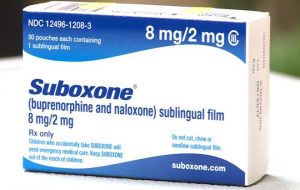 New reports are now showing that the “life-saving” medication known as buprenorphine is putting kids at risk…and even killing some. Buprenorphine, the main ingredient found in Suboxone, Subutex, and Probuphine, continues to pop up in poison control reports, emergency room visits, and fatalities for young children under the age of 18. Although this medication has shown to be beneficial in the detoxification process of opioid addicts, it still proves to be dangerous for many.
New reports are now showing that the “life-saving” medication known as buprenorphine is putting kids at risk…and even killing some. Buprenorphine, the main ingredient found in Suboxone, Subutex, and Probuphine, continues to pop up in poison control reports, emergency room visits, and fatalities for young children under the age of 18. Although this medication has shown to be beneficial in the detoxification process of opioid addicts, it still proves to be dangerous for many.
This new study, which will be published in the journal Pediatrics, examined calls to poison control centers over a ten year span. Between 2005 and 2015, 188,000 calls were made regarding child exposure to opioids and synthetic opioids. As the first few years showed an uptick in exposures by 86%, after 2009, the researchers found a decrease of 32% in exposures to all opioids, except one. That one drug to remain on a steady incline? Buprenorphine. Mainly, between 2014 and 2015, incidents involving buprenorphine increased dramatically and 90% of those exposures involved children five years or younger.
Nearly half of the children exposed to buprenorphine had to be admitted to a hospital or other health care facility; 6.6% of those children suffered serious medical conditions and 175 died from buprenorphine exposure and overdose. More than half of those that suffered a fatality were teenagers. To put it into perspective, between 2005 and 2015, the two most dangerous drugs for children under the age of 18 were buprenorphine and Methadone…even surpassing other chemicals such as Fentanyl. Anyone else see something wrong with this picture?
Marcel Casavant, the Medical Director of the Central Ohio Poison Center at Nationwide Children’s Hospital and author of the study said, “Counter to the decline in exposures to other types of opioids, we actually saw a pretty significant increase in exposures to buprenorphine during the last two years of the study among children. Calls to poison control centers regarding buprenorphine continue to climb.”
One may wonder, why this medication has become so very dangerous to our youth. Casavant has a few explanations behind the study’s findings. First is the medication itself, the form it comes in, and how enters the bloodstream. Suboxone, which is the combination of buprenorphine and naloxone, comes in both dissolvable strips and sublingual tablets. The mucus membrane of the mouth is able to absorb the drug before it is swallowed, thus even though parents may remove the drug quickly, some children can begin showing symptoms of inebriation and/or overdose. The second reason is the simple fact that buprenorphine is becoming the preferred medication for the treatment of opioid addiction, versus other drugs such as Methadone. Rather than having an individual stand in line waiting for their daily dose of Methadone, doctors now prefer to prescribe a medicine they could take home. While this is sensible to a degree, many of those doctors do not educate their patients on the dangers of drugs, such as Suboxone and Subutex.
In an interview with Vocativ, Casavant remarked, “When the prescribers are trying to sell the patients on how much safer the drug is, I suspect sometimes they don’t mention, ‘By the way, this could be deadly to your child even if you think you’ve got it out of your child’s mouth.” One major failing in the treatment of opioid addiction with medications such as Suboxone, is the lack of education, on both the side of the physicians, as well as the patients. Prescribers fail to properly educate their patients on risk factors and the importance of counseling, but medical schools fail to provide adequate training in the treatment of addiction. As things “roll down hill,” addicts will surely suffer more because they are not properly treated.
Along with the education that many doctors fail to provide to their patients, the lifestyle in which many opioid addicts experience may not always be one that is conducive and healthy…even if they are no longer using heavier drugs such as heroin. Frankly, it takes more than a pill or dissolvable strip for an addict to truly get better. Many times, prescribers do not require buprenorphine patients to attend drug and alcohol therapy and/or participate in a 12-step program. Without these things in place, an addict will struggle to change their behaviors or even recognize the importance of changing their lifestyle. Sometimes, without the guidance of a professional, addicts tell themselves, “Well I’m not using heroin anymore, so I’m okay…What’s the big deal?” Thus, understanding that living in a chaotic environment is not only dangerous for their sobriety, but also dangerous for their child’s well-being. Knowing to lock up their medications or keep them in a safe place does not even cross their minds.
At what point do we say, “This is not the answer.” Although buprenorphine can aid in the detox process and help opioid addicts wean off drugs like heroin more comfortably, there are countless risk factors to the patient, and now, their children. Prolonged use of buprenorphine elevates the risk of further addiction and more difficult withdrawal symptoms, along with abuse and diversion of the drug. And now, the medication poses a great threat to innocent children? There has to be more consideration for alternative kinds of treatment, including therapy, abstinence, and a 12-step fellowship. These models of treatment have proven to be most effective in lasting sobriety and long-term recovery. Buprenorphine, Suboxone, Subutex, and other opioid medications are only a temporary solution. They are merely a crutch. It’s basically like trying to put a Band-Aid over a gunshot wound and expecting it to heal.
Contact Clearbrook For Addiction Treatment
Are you or someone you love struggling with alcoholism or drug addiction? Have you found yourself addicted to medication that was supposed to help you get sober? With over 40 years of experience in treating chemical dependency, Clearbrook Treatment Centers can help. We have had many people come to us addicted to opioid treatment medications, such as Suboxone and Methadone, and have had the privilege of watching them recover from ALL mood and mind-altering substances. So, there is hope for recovery and you can have it too! Please contact our Admissions Specialists today for further information.







